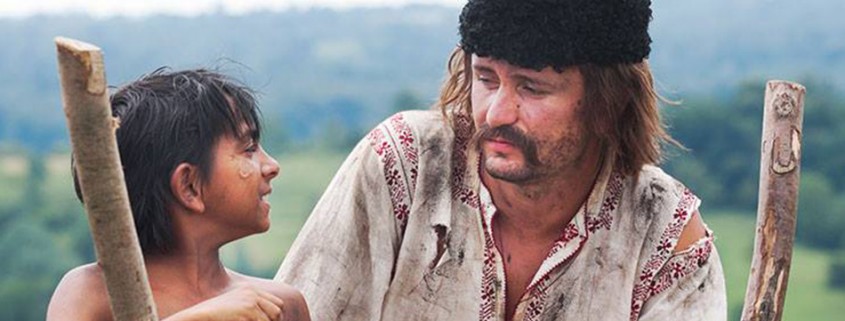Aferim! is both a forceful and entertaining film
Romanian filmmaker Radu Jude’s newest film Aferim! is a powerful yet wonderfully entertaining story that takes the audience to the 19th-century Ottoman Empire for a ride that won’t be forgotten anytime soon.
It’s 1835 and gypsies run rampant in the Ottoman Empire. Brilliantly shot in black and white 35mm, Aferim! goes on a journey with Romanian constable Costandin and his son Ionita who are ordered by a rich boyar to find the runaway slave that slept with his wife. The film is an homage to westerns, but it would be a shame to not include the other elements that make the film as deliciously fun as it is. Costandin and Ionita hurl every racist, antisemitic and sexist insult in the book without reservation. Hey — it was a different time back then. The dark humor works because it was a nightmarish time to live in. The father and son aren’t exempt to anyone else’s cruelty either. This dryly delivered humor balances well with the heavy social issues present that makes the film worth anyone’s time to watch. Aferim! reminds the world that classic cinema isn’t dead. Just foreign. After reviewing the film, the Daily Trojan had the chance to ask the writer and director of the film, Radu Jude, a few questions.
Daily Trojan: What was the inspiration for this film and did the lack of movies on gypsy slavery contribute?
Radu Jude: In terms of inspiration, it is difficult to discern them, I mean the ones which are decisive compared with the ones which are only simple accessories. The real answer is that the inspiration comes from everything. I am sure I wouldn’t have made this film if I wouldn’t have had the life I lived, the meetings I had, the books I’ve read, the thoughts I had. Everything. If I have to think of some clear inspiration sources, first I would mention the history books I’ve read, because I have an interest in the past, in the history and this preoccupation made me search and read some books. Then, when the idea for this film appeared, my inspiration was mostly related to the specific research: meeting with historians, reading collection of documents, old books history books again and so on. My nature is more oriented towards literature and less towards films, but there were also classical Westerns that proved to be an inspiration. One would be The Searchers of John Ford. Other would be A City of Sadness by Hou Hsiao Hsien for the way he found in the past of Taiwan things relevant for today, an approach I felt it is mine as well. But as I said, everything could become a source of inspiration. If the lack of films on the slavery contributed? I would say no. If I imagine, let’s say, that there are dozens of Romanians films on the topic, I think I would still have directed this film because it is not the novelty of the theme that prompts me to work, but simply my desire to investigate it, regardless how many have done it before.
DT: What was behind the decision to shoot the film on black and white, 35 mm film stock?
RJ: That’s so weird, it is the question everybody — literally, everybody — asks. But for me it is something very simple. Black and white is just one of the tools a filmmaker can use. Of course there are other reasons behind this decision, like the desire to make the viewer acknowledge the artificial nature of the cinematic medium — something which is not taken for granted by many viewers — and the desire to emulate the old Westerns, but otherwise it is just a possible tool. Regarding the 35 mm, well, we have tested different cameras, including digital, and we screened them together. When seeing the images one after another, it was obvious that the 35mm looked better in terms of the classical look we wanted to achieve.
DT: What advice do you have for young filmmakers today?
RJ: I am sorry to disappoint, but I am not able to provide advices, I am in great need myself for useful ones. I stopped searching for them anyway, because an advice is always a kind of stupid cliché like “Be yourself!” or “Follow your vision!” or “Do your best and relax!”, etc. I remember reading [director Steven] Spielberg’s answer to this question and he advised the filmmakers to stay in shape, to work out because the shoot might be tiring. I think he is right; if you are fat, you can find it difficult to move quickly on the film set.


Packs more than a punch! “Aferim” should warn viewers so that those who don’t like to be traumatized by entertainment can avoid it. Closing my eyes failed to protect me from the agony… no escaping the slave’s protracted shrieks as he suffered and probably died from his master’s brutal sexual torture, meant to terrorize his subjects. This film vividly portrays the 1835 Ottoman Empire’s barbarous racial and religious hatreds that still fuel conflict, and how participants endured.